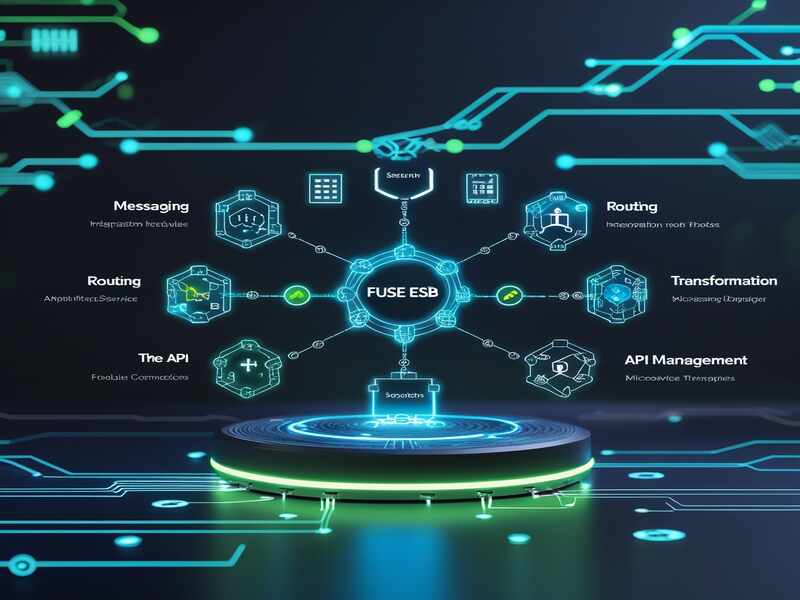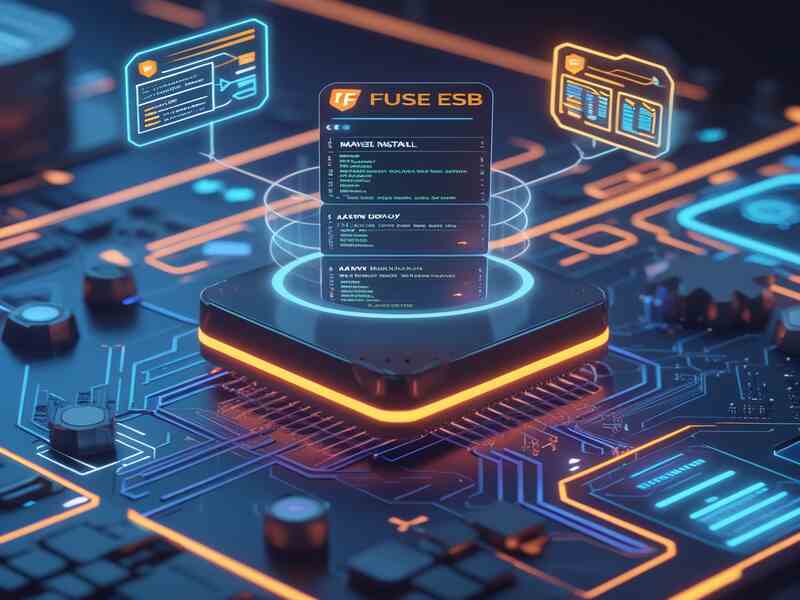What is Fuse ESB?
What is Fuse ESB?
AFuse ESB is a service bus that acts as a transformer or mediator between different systems, providing a smoother flow of information between them.
It can communicate between different systems. For example, if two systems are connected via a network, the speaker can use a JPOS fuse or server to communicate between them.
The Fuse ESB concept involves a system that acts as a translator between two separate systems, System A and System B.
System A knows some other language, while System B knows different languages. In between, System A and System B know each other’s languages.
ESB takes messages from System A and transforms them into various formats. It then sends these transformed messages back to System A, allowing it to understand and respond to the messages from both systems.
Overview of Fuse ESB
Fuse ESB is an open-source platform built on Apache Camel to streamline communication between enterprise services and applications.
It provides a lightweight, flexible architecture for integrating diverse systems and services, reducing complexity and enabling organisations to build scalable, maintainable solutions through seamless data exchange.

Fuse ESB simplifies integration by enhancing efficiency through process automation and centralised communication. It offers flexibility and adaptability to changing business requirements. It shortens time to market by accelerating the development and deployment of integration solutions with ready-to-use connectors and transformation tools.
Additionally, it improves business operations by providing flexible integration methods and technologies.
Primary Functioning of Fuse ESB
The primary function of ESB is to record transactions and check whether they are successful or failed.
This is done through a database called db. The structure of ESB is explained, including using a pure XML language (ESB XML) and a database for recording transactions.
For example, if a Maven project is created, it should be a pure XML language.

The basics of ESB include the need for architecture, a JBoss Fuse version, a repository, and JDK.
The development environment, model, and Maven Essentials for this having the necessary tools and resources for the development process is straightforward.
For instance, JBoss uses ESB development, and there is a need for a repository.
Maven project using Fuse ESB
Maven project using ESB highlights the importance of understanding each system’s structure, functionality, and requirements to ensure smooth and efficient operation.
A system uses a series of modules to manage various transactions. These modules include business, contract, and contact modules.
Business modules are used for logic implementations, while contract modules are used for contracts. Contact modules are used to manage various types of files and requests.

The first module is the “restoration” module, which is used to restore data from a modified system.
The second module is the “soap to rest” module, which is used to rest data from a modified system.
The third module is the “business” module, which creates a contract between two systems.
The fourth module is the “contract” module, which creates a contract between two systems.

Fuse ESB Training

Implementation of various modules within the FUSE ESB System
Implementation of different modules in the system, such as the “inbound and outbound” module, the “soap to rest” module, the “business module”, and the “contract” module.
Each module has its functions and requirements, which are then used in the system to perform specific tasks. For example, the “restoration” module restores data from a modified system, and the “business” module creates a contract between two systems.
The JBoss Fuse with Fabric project is introduced, which requires downloading the JBoss Fuse from various sources. The process begins with setting up a fabric, which is then used to create a sample service.
Creating and deploying a project using Maven Essentials
This is the process of creating a Maven project using ESB. It begins with a request sent to ESB, which receives a response from the user.
The response is then passed to various systems, such as ESB, which transforms it into a different message.
The response is returned to the user, and the system records the transaction.
A new version of the existing service is required to create Safari and start the new service. To create Safari, the user must first create the Safari Nv, then the Nv, and finally the Nv.
It depicts the structure of the USB and SP modules in detail, emphasising the importance of understanding this structure to ensure smooth and efficient development.

Fuse ESB online Training

Understanding the various UH bundles in Fuse ESB
Understanding the various UH bundles and their corresponding sub-contents is crucial for developing a new service effectively. Its significance in the development process.
A series of transactions that occur in a computer system. The first transaction is a request for a specific item, which is sent to the system.
Understanding the different interfaces and services within the ESB system and the types of interfaces and services available.
The USB structure is established, and the modules are learned about online resources, such as Red Hat JBoss Fuse.
Many resources are available online, including the Red Hat JBoss Fuse website.
Deploying multiple services into different containers, each with varying deployment times. The deployment time is categorised into three levels: 882, 883, 880, and 886.

The deployment time is very slow, requiring three to four hours for each service. The deployment time for each service ranges from 0.001 to 0.005 hours.
The reasons for using three containers in one server include cost savings, flexibility, and the ability to manage multiple services simultaneously. The total deployment time is 900 minutes.
The system has four servers and twelve containers, each running at least twice. If one server or container is stopped, there are no issues in production.
If two servers are running, they can manage transaction requests coming to ESB. Online transactions will continue if any site and the online one are active.
It depicts deploying multiple services into different containers, each with varying deployment times.
If one server or container is stopped, there are no issues in production.
If two servers are running, they can manage transaction requests coming to ESB.
Online transactions will continue if any site and the online one are active.
Conclusion
Fuse ESB reduces complexity, automates processes, and centralises communication.
It provides flexibility and adaptability to changing business requirements and accelerates integration solution development and deployment with ready-to-use connectors and transformation tools.
It improves corporate processes with flexible integration methods and technology.
It encompasses aspects of the application, including its installation, deployment, and documentation.
By understanding these topics, developers can better manage their JBoss Fuse application and ensure its smooth functioning.

Fuse ESB course Price


Chaitanya
Author